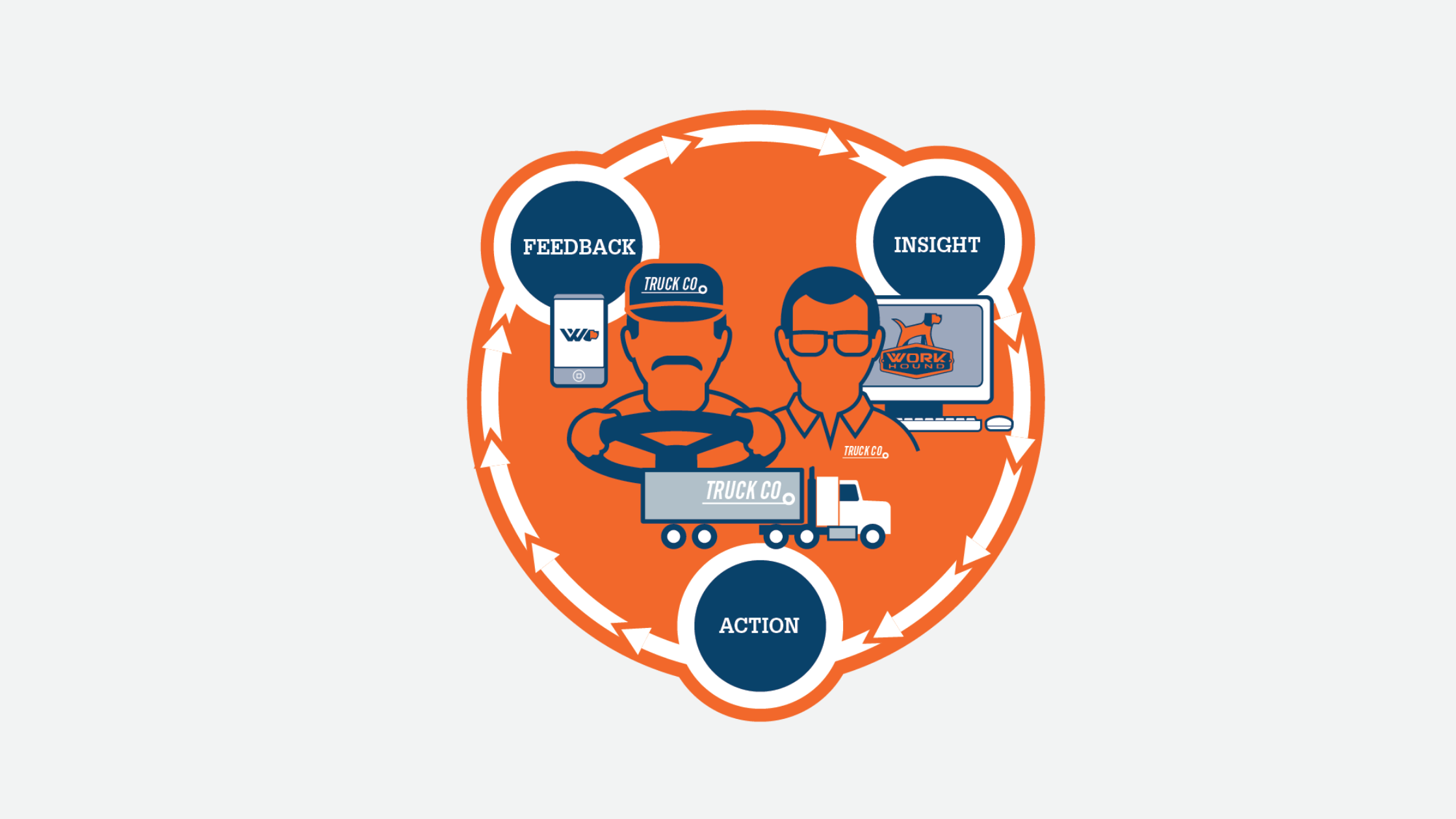When It Comes to Building Driver Trust, Stories Matter

If you’re involved in marketing efforts for your organization — or even just somewhat familiar with your company’s advertising strategy — you likely know that storytelling plays an important role. When you’re trying to catch the attention of a customer, you have to tell a good story about what makes your organization different than the competition.
But did you know that storytelling also plays an essential role when you’re marketing your company to internal customers? It’s true — when you’re trying to keep your employees happy and satisfied with the work they do and your business overall, telling the right stories can make all the difference.
After all, so much of retention within the trucking industry is about building and maintaining trust between a company and its drivers. It’s one thing to simply say your company culture is great, but demonstrating why your company culture is great is where it really matters. It’s the “showing” rather than the “telling” that counts.
Today, we’re exploring the ways in which feedback can influence your company’s approach to “storytelling,” as well as sharing ways you can better implement the craft in your hiring and retention efforts.
Trust + Feedback = Stories to Tell
To share information that resonates with your current and existing employees, you first have to actually find out what matters to them. And for drivers to share what matters, they first have to trust that their thoughts won’t be ignored. The key ingredient in this equation? Trust.
“It’s difficult to build trust with drivers because the industry has broken their trust for years in so many ways,” says Katie Love, Marketing Manager at WorkHound. “For new professionals in other industries, there’s a blank slate for building trust. But for drivers, they are often part of a system that’s known for leaving drivers behind or leaving them out of decision-making processes. That’s been going on for so long that drivers feel like it’s a cultural norm.”
Love explains that there are a couple of ways to earn trust from your drivers: The first is by committing to an individual person or a group that you’re going to do something and then following through with that commitment. The other way to earn trust is to provide examples of how your company takes action to meet driver needs.
A program like WorkHound can help you gather real-time feedback about what your drivers need — but you can’t simply gather the feedback and then forget it.
In order to demonstrate for your drivers that their feedback is important and their voices are being heard, they need to see (or hear about) meaningful action being taken. This may mean providing a solution for a driver-specific problem or the group at large.
Storytelling comes into play when you spread the word about what you did to solve the problem.
How to Tell Your Stories
The first step to effective storytelling is to do something worth talking about! Listen to your team of drivers and take action based on their wants and needs. Then be sure to communicate subsequent updates to policies, which can be accomplished in multiple ways.
WorkHound offers a variety of tools to communicate with your drivers about how you’re using their feedback.
“For your current drivers, that communication can happen through broadcast messages and internal newsletters,” Love says. “We see customers benefit by sharing stories in broadcasts and letting the team know what’s happening with all drivers, including those who haven’t provided feedback yet. This provides a signal to those who haven’t shared yet that the company really does take action and how.”
When you begin sharing these actions with your drivers, you may be surprised by how much they share in return. That continued feedback may even lead to marketing materials for your external audience, including recruitable drivers.
“Something cool that happens when a company takes action is that drivers will often respond on WorkHound by sharing comments about the company’s action,” Love says. “Your company closes the feedback loop by letting drivers know what was done, but often drivers take an additional step in letting companies know how they feel about the response. Then the company is able to share that positive feedback on social media and on other platforms.”
There’s truly no downside to spreading the word about what you’ve heard from your drivers and what you’ve done to improve policies, procedures, and working conditions.
“The stories are the cherry on top,” Love says. “These stories are saying, ‘We’ve prioritized our drivers based on what you’re sharing, so keep it up. Send us more feedback.’ This really sets in motion a wave of positive change that’s just too good not to share.”
Want to learn about WorkHound through our success stories? Download our latest case study with Milan Supply Chain Solutions to learn how they’ve improved driver retention.
driver communication, driver feedback, driver retention, driver success story, driver trust
Let's Build Better Workplaces Together
Revolutionize your company culture and your worker retention rates by improving communication and engagement.
Book a Demo

